Can I simulate a race course with the dyno?
Many Circle Track racers have explored the idea of using chassis dynamometers to help them develop faster and more reliable combinations (without chewing up valuable track test time). The idea is certainly alluring. Simply drive your car onto some high inertia rolls, hit the gas to get a power reading, and start making changes to see what works. Alas, like most things in life, it’s a bit more complicated when you really get into it!
First, you’re probably already making big power – at least a lot more than most street guys really make. Therefore, getting traction between the tires and rollers is more involved than it is for testing grocery haulers. High power requires high traction, and unfortunately, small rolls require lots of strap down pressure to reliably transmit 400+ wheel horsepower. Excess pressure deforms tires around the small roll contact area. Besides robbing power, this overheats and damages the tires during lengthy race simulations. So, to provide most of the traction from gravity alone, you need large diameter rolls (at least two or more feet in diameter) with grooved contact surfaces.
Next, if your dynamometer is going to be suitable for anything other than “carnival smoke shows,” it requires a computer-controlled absorber equipped with a torque measuring load cell. This allows capturing much more than just flash inertial acceleration data. While some drag cars might get at least tidbits of useful information from a few seconds of inertia-only spin-up, circle track engines must run longer (under real-world loads) to return meaningful test results. You want to be able to see what happens to the power as water jacket and oil temperatures stabilize, etc. That’s why DYNOmite Dyno builds large diameter roll chassis dynos with computer-controlled absorbers that handle over 2,000 Hp.
However, mating a chassis dyno that can handle long duration race speeds and a computer-controlled absorber that simulates on-track drag loads is only part of the equation. Ultimately the dynamometer’s data acquisition and control software makes or breaks your system’s usefulness (Imagine if the latest 1+ gigahertz PC only ran DOS!). Fortunately, these systems utilize DYNO-MAX “Pro” software. Besides handling user programmed racecourse simulations, DYNO-MAX can also automatically and “intelligently” simulate** appropriate loads (real-time) based on the driver’s throttle movements. With optional electronic throttle control, the driver doesn’t even need to provide that! As DYNOmite Dyno reminds us, powerful and flexible control software soon becomes the dyno, whereas a weak program just becomes a straight jacket!
**DYNO-MAX’s “Simulate Road Load” is a special load control formula. Instead of adjusting the absorber to hold a fixed velocity, it continuously calculates the total Hp delivered against the theoretical vehicle drag (using both wind drag and road friction data) to determine how fast the vehicle should be going. It constantly readjusts the dynamometer load to hold that calculated road speed (even simulating vehicle inertia). Drag is calculated based on user entered Run Information parameters like Coast Down G’s and Vehicle Weight.
In fact, if your drag data is accurate, the dyno will hold the top speed to what the vehicle would actually attain on a level test track. With a fast acting absorber and controller, the acceleration (and required throttle feel) is similar to that of actually driving the vehicle on the highway.
